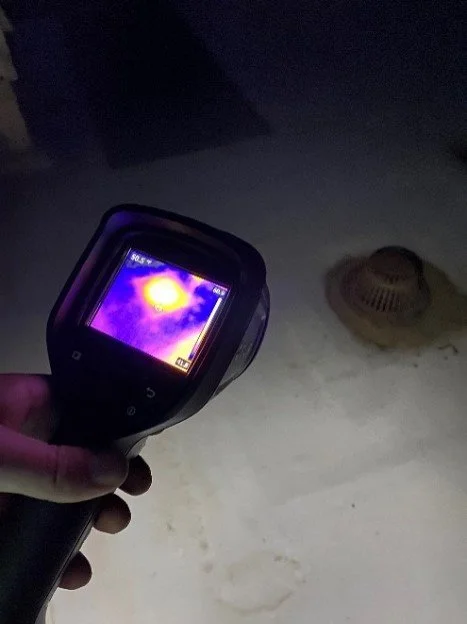When it comes to maintaining your building, few systems are as critical, or as costly—as your roof. A roof protects the structure, the occupants, and everything inside from the elements. But what happens when your roof starts showing signs of age or damage? Should you repair it, or is it time to invest in a full replacement?
GRLA’s Building Envelope Sciences team is often asked this very question. The answer depends on a range of factors, age, condition, budget, and long-term goals. Here’s a breakdown to help you understand the difference and make an informed decision.
Roof Repair: Targeted Fixes for Specific Issues
Roof repair
Roof repair typically addresses isolated problems without replacing the entire roofing system. Common reasons for repair include:
Localized Damage: Leaks, punctures, or cracks confined to small areas.
Weather-Related Wear: Minor storm damage such as lifted shingles, membrane tears, or damaged flashing.
Preventative Maintenance: Reinforcing problem areas to extend the service life of the roof.
Repairs can be a cost-effective solution if the rest of the roof system is sound. However, repeated patchwork can become inefficient and costly if the underlying issues are more widespread.
Roof Recoating: An In-Between Option
In addition to repair or replacement, many commercial roofs are good candidates for recoating. This process involves applying a liquid-applied membrane, often silicone, acrylic, or polyurethane over the existing roof system.
Roof recoating
Pros:
Cost Savings: Typically less expensive than a full replacement.
Extended Service Life: Can add 10–15 years of life to the existing roof.
Improved Performance: Enhances reflectivity (lower cooling costs), increases water resistance, and seals minor cracks.
Minimal Disruption: Installed over the existing roof, making the process quicker and less disruptive to building operations.
Sustainability: Extends the life of the roof and reduces construction waste.
Cons:
Condition Dependent: Only works if the underlying roof is structurally sound, saturated insulation or damaged decking must be addressed first.
Maintenance Required: Coatings may need periodic reapplication and wear more quickly in high-traffic or ponding areas.
Limited Scope: Does not resolve deeper issues like drainage deficiencies or widespread deterioration.
Warranty Limitations: Some manufacturers do not extend warranties for coated systems.
Roof Replacement: A Full System Renewal
Roof replacement
Replacement involves removing the existing roof system down to the deck and installing a new system. Reasons for replacement often include:
End of Life: Most commercial roofing systems have a service life of 20–30 years. Beyond that, repairs may no longer be reliable.
Widespread Deterioration: Water infiltration, failing insulation, or compromised structural integrity that can’t be fixed with spot repairs.
Code Compliance and Efficiency Goals: Replacement may be necessary to meet updated energy codes or to integrate higher performing, more sustainable materials.
Long-Term Investment: A new system offers peace of mind, reduced maintenance, and better protection for the building’s assets.
When choosing between repair, recoat, and replace, our team looks at several critical factors:
So how do you know which is right for your building? Start with an independent building envelope evaluation. Our team typically assesses:
Roof Age: Is the system nearing or beyond its expected lifespan?
Extent of Damage: Are issues isolated or widespread?
Underlying Conditions: Is there water damage in the insulation or deck?
Performance Goals: Do you want to improve energy efficiency, sustainability, or durability?
Budget and Timing: Repairs may be a short-term solution; while recoating or replacement represent a more durable long-term investment.
How GRLA’s Building Envelope Sciences Team Can Help
Every building is unique. Our team of specialists provides objective, data-driven evaluations to help owners and facility managers make informed decisions. Using tools such as moisture surveys, core sampling, and thermal imaging, we dig deeper to give you a clear, accurate picture of your roof’s condition.
We don’t just stop at identifying problems, we work with you to find a solution that aligns with your goals, budget, and long-term strategy.
Bottom Line
Repairs can extend the life of a roof and provide short-term savings, but when deterioration is widespread or the system is nearing the end of its service life, replacement is often the more cost-effective option. The right decision depends on a careful evaluation of the roof’s current condition, your performance goals, and your long-term plans.
If you’re unsure whether your roof needs repair or replacement, reach out to GRLA’s Building Envelope Sciences team. We’ll help you make a confident, informed decision that protects your building and your investment for years to come.


























































